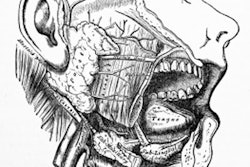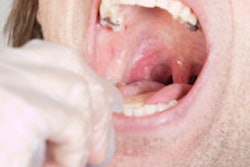
When patients come to your office with what you diagnose as oral lichen planus, actinic keratosis, erythroplakia, or another oral potentially malignant disorder (OPMD), they may be experiencing physical and psychological distress in addition to pain.
A new study measured the effect of these disorders on patient activities of daily living and quality of life. The researchers found they not only physically and functionally impaired the patient, but they also had a debilitating effect on their well-being and ability to interact with other people. The study was published in PLOS One (April 14, 2017).
“The impacts of OPMD also extended beyond physical impairment and functional limitations to aspects of daily living, notably psychological and social well-being.”
"The impacts of OPMD also extended beyond physical impairment and functional limitations to aspects of daily living, notably psychological and social well-being," the authors wrote.
The study was led by Jyothi Tadakamadla, MDS, of the Menzies Health Institute Queensland and the Griffith University School of Dentistry and Oral Health in Gold Coast, Queensland, Australia.
Multifactorial impact
Oral potentially malignant disorders are a group of disorders of varying origins (usually tobacco) that increase the chances of a malignant transformation in a patient's oral epithelial cells. These disorders are illustrated by changes in the genetic material of oral epithelial cells and may lead to oral squamous cell carcinoma.
The most important OPMDs with malignant potential are erythroplakia, oral leukoplakia (OL), oral lichen planus (OLP), oral submucous fibrosis (OSF), and actinic keratosis.
Their role in clinical practice is increasingly being recognized, and the impact of these OPMDs can go beyond oral and bodily pain to include emotional and social well-being, the authors noted. Therefore, the Australian researchers wanted to understand the effect of OPMDs on patients' physical and psychological ability to perform activities of daily living.
A total of 32 patients at the Oral Medicine Clinic of the Panineeya Institute of Dental Sciences and Research Centre in Hyderabad, India, who were diagnosed with OL, OSF, or OLP were invited to participate.
The researchers conducted 18 one-on-one interviews (20 to 40 minutes each) and three focus groups (more than an hour each) in a nonclinical setting. The one-on-one interviews yielded the study data.
The study participants' ages ranged from 17 to 67 years, and 19 of the participants were men. More than half of the participants had fewer than 12 years of formal education, and almost three-quarters were in semiskilled/unskilled occupations or were unemployed.
Almost half of the participants reported that they had gone through multiple referrals and appointments with oral and medical healthcare providers without a correct diagnosis. However, once they were successfully diagnosed, more than 60% of the patients were happy with the knowledge they were given about their oral condition.
The researchers focused on four main themes from the patients' responses:
- Difficulties with diagnosis and knowledge of the condition
- Physical impairment and functional limitation
- Psychological and social well-being
- Effects of treatment on daily life
During interviews, the researchers identified two themes of psychological and social well-being. A vast majority of patients (81%) reported that their mouth condition had a debilitating effect on their psychological well-being, while about half of the patients reported being frustrated and depressed.
The authors also noted four additional repeated themes from the patients:
- Financial impact of treatments
- Difficulty in keeping appointments
- Satisfaction with treatment
- Impact of habit cessation
Treating oral potentially malignant disorders usually takes a long time and involves multiple appointments, so keeping up with the appointments was an issue for patients, according to the authors. Many of these patients were of low socioeconomic status, so attending an appointment incurred loss of salary and induced financial stress.
Widely applicable
While only 32 OPMD patients participated in this study, the authors reported that "data saturation" was achieved in the 11th patient interview.
"In qualitative studies, the sample size is dependent on data adequacy. Further, interview quality and patient diversity are more important than the absolute number of the participants," they wrote.
They also noted that patients with a range of characteristics, types of OPMDs, levels of disease severity, ages, and education levels were included in the study.
The authors concluded that the results of this study go far beyond the 32 patients who participated.
"We believe this instrument can be used in patient populations in other countries after undergoing cross-cultural adaptation," they wrote.



















